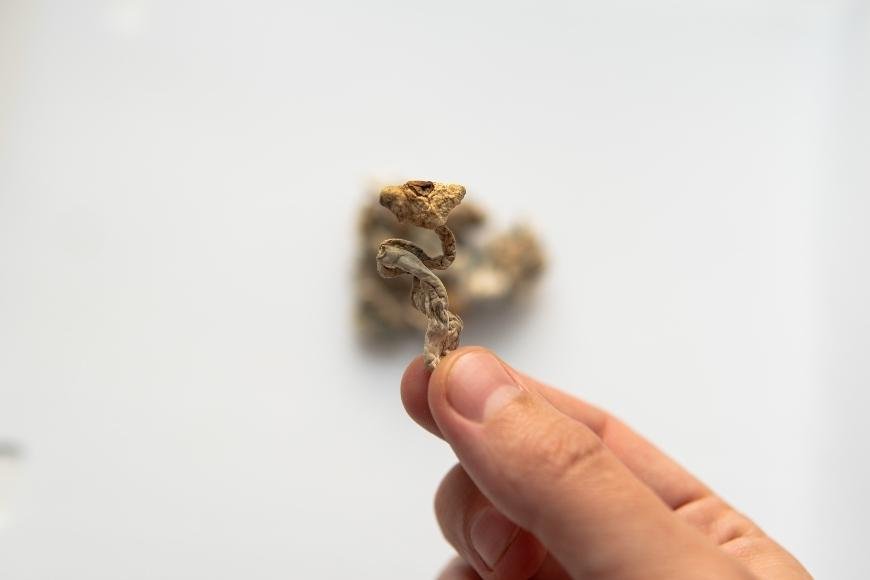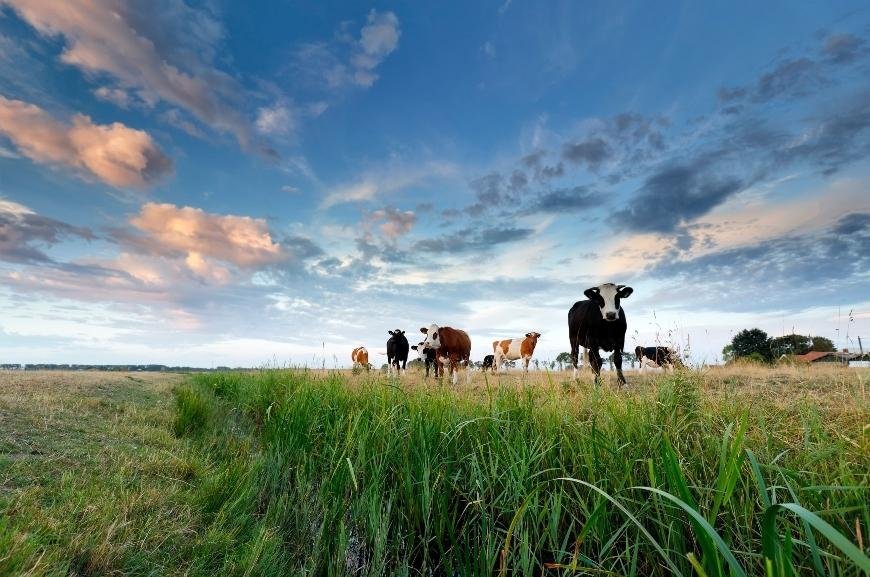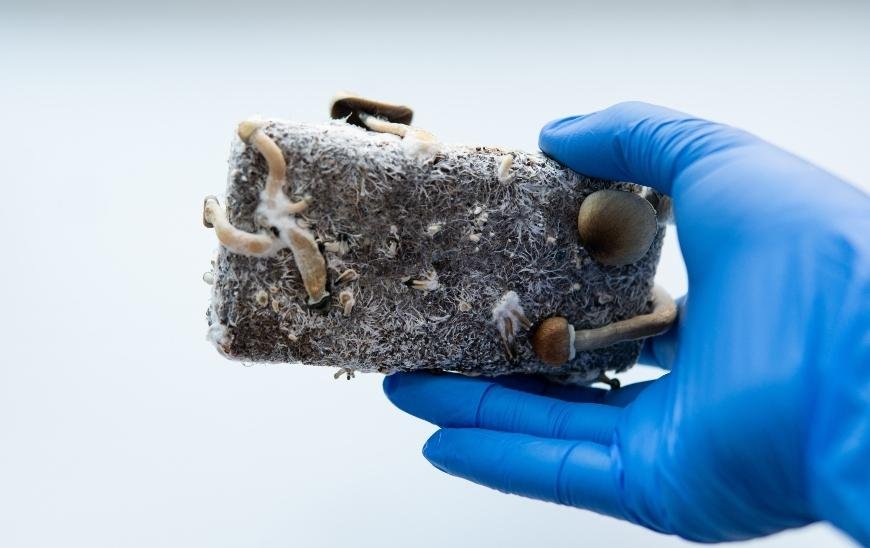Do Magic Mushrooms Grow in Cow Poop?
Discover the truth about do magic mushrooms grow in cow poop. Learn about the potential therapeutic benefits of psychedelic substances, safety considerations when foraging wild-growing mushroom species, and the legal status of psychedelic substances around the world.

Do magic mushrooms grow in cow poop? The query of whether or not magic mushrooms can be found in cow manure has provoked great curiosity, particularly with the potential medicinal advantages that psychedelics may provide. Magic mushrooms, boasting psychotropic effects, contain psilocybin - a chemical compound located in some fungi. But do these same varieties also grow in manure from cows? To answer this intriguing query, we must first understand what magic mushrooms are and how they can be grown, before exploring safety considerations when foraging wild-growing mushroom species, as well as the legal status of psychedelic substances around the world. Let us explore further together on this journey to understanding if, indeed, magic mushrooms really grow in cow poop.
Table of Contents:
- Do Magic Mushrooms Grow in Cow Poop?
- How to Grow Magic Mushrooms in Cow Poop?
- How to Identify Wild-Growing Magic Mushroom Species?
- Safety Considerations When Foraging for Wild-Growing Mushroom Species?
- Common Uses and Benefits of Consuming Psychedelic Substances?
- Legal Status of Psychedelic Substances Around the World?
- FAQs in Relation to Do Magic Mushrooms Grow in Cow Poop
- Conclusion
Do Magic Mushrooms Grow in Cow Poop?
Yes, magic mushrooms can grow in cow poop. The conditions necessary for the growth of psychedelic fungi are present in many types of animal dung, including that of cows. Fungi prefer warm and moist environments, which is why they often thrive in piles of fresh cow manure or patties found in pastures frequented by cattle. Additionally, the plant matter and other organic materials found within a cow’s digestive system provide an ideal substrate for the mushroom mycelium to colonize and spread its spores.
The benefits associated with growing mushrooms from cow poop include having access to a large variety of edible species such as Psilocybe cubensis (the most common type), Conocybe pubescens, Coprinellus niveus, and several others. Moreover, by cultivating directly from coprophilous fungi (fungi that thrive on dung), one can access a range of hallucinogenic varieties. By utilizing this method of cultivation, you have greater control over the quality and potency of your product compared to picking wild mushrooms or purchasing dried ones online.
Although there are many advantages associated with cultivating magic mushrooms from cow poop, there are also some risks involved. It is important to know what kind of mushroom you’re looking for before attempting any harvesting activities since certain varieties may look similar but contain very different compounds or even be poisonous if consumed raw. Additionally, it is important not to confuse wood chips or other debris mixed into the soil with actual fruiting bodies, as ingesting them could lead to serious health complications such as gastrointestinal distress or worse, depending on the type ingested. Lastly, when gathering material from cattle pastures, make sure not to accidentally pick up any toxic plants like hemlock while searching for fungal species, as they could prove fatal if eaten raw.
Magic mushrooms can indeed be grown in cow poop, however, the process is not as simple as it may seem. With that said, if you are looking to grow magic mushrooms at home, then learning how to prepare and spawn a substrate with mushroom mycelium is essential for success.

How to Grow Magic Mushrooms in Cow Poop?
Harvesting hallucinogenic fungi from cow manure is an accessible way to acquire psychedelic mushrooms without having to search for them in nature. It’s also relatively easy and inexpensive, so even beginner mushroom cultivators can give it a try. To cultivate your own magic mushrooms, simply follow the easy steps outlined below.
Mixing cow manure with straw or other organic material, such as sawdust or wood chips, is the initial step in preparing the substrate. Ensure all components are uncontaminated and clear of pesticides, for these can be hazardous to both you and your harvest. The mixture should be moist but not overly wet; if it’s too dry, add some water until it reaches an ideal consistency. Then spread out the substrate in shallow trays or bags so that it has enough room for air circulation and the growth of mycelium (the vegetative part of a fungus).
Spawning the Substrate:
Once you have prepared your substrate, you will need spawn - either store-bought grain spawn or homemade liquid culture – which contains living mycelium cells ready for colonization. Simply mix this into your prepared substrate until evenly distributed throughout; then cover with plastic wrap or foil to keep moisture levels high while allowing air flow during the colonization process (which usually takes around 2 weeks).
Fruiting & Harvesting:
After two weeks have passed, remove the plastic/foil covering and place the tray/bag near a light source, such as a window sill or fluorescent bulb, on low setting (to prevent burning). You should start seeing pinheads forming within 1-2 days; continue providing light exposure over the next few days until caps begin opening up fully (this indicates they are mature enough for harvest). Finally, cut off stems close to ground level using scissors before consuming.
By following these simple steps carefully, anyone can successfully cultivate their own magic mushrooms right at home. Therefore, it is essential to ascertain the species of mushroom being cultivated prior to ingestion in order to ensure safety when handling psilocybin-containing fungi.
Cultivating magic mushrooms using cow manure is a straightforward undertaking, provided you have the necessary supplies and adhere to the instructions. Gaining insight into the realm of fungi necessitates being able to differentiate between various wild mushroom varieties, so as to stay clear of any toxic ones.
How to Identify Wild-Growing Magic Mushroom Species?
Identifying wild-growing magic mushroom species is a skill that requires knowledge and experience. Identifying a certain species of magic mushroom involves noticing particular features, as well as areas where they may be located. Knowing what to look for can help you find the right kind of mushroom and avoid any poisonous varieties.
When seeking wild mushrooms, it is essential to be aware of the characteristics they share. Most magic mushrooms will have white or yellowish gills on their underside, with a spore print that is either brown or purple in colour. The cap should be smooth and dry with no visible damage or discolouration, giving it a distinct appearance. Additionally, many psychedelic fungi produce fruiting bodies which resemble small umbrellas and can range in size from tiny buttons up to large caps.
Common locations for wild-growing psychedelic fungi include wood chips, cattle pastures, cow piles (or patties), herbivore dung (such as cow manure), and plant matter like grass clippings or hay bales. These areas provide an ideal environment for spores germinating into mycelium – the root structure from which fruiting bodies emerge – so keep an eye out. Some popular species, such as Psilocybe cubensis, can even grow directly on cow dung; however, this is not recommended due to potential contamination risks associated with consuming such substances harvested from animal sources. Other commonly found varieties include Conocybe pubescens and Coprinellus niveus – both of which prefer growing on wood chips rather than animal faeces.
It is also important to remember safety considerations when hunting for wild-grown mushrooms: wear protective gear, including gloves if necessary; take note of any distinguishing characteristics; research how edible varieties differ from poisonous ones; and never consume anything unless you are absolutely sure it is safe. With careful observation and cautionary measures taken into account before harvesting your bounty, you should soon be able to pick the perfect specimens without fear.
By understanding the characteristics of wild-growing mushroom species and their common locations for them, you can safely identify magic mushrooms in their natural habitat. Now let's take a look at safety considerations when foraging these species to ensure safe consumption.
Safety Considerations When Foraging for Wild-Growing Mushroom Species?
Exploring the great outdoors for wild mushrooms can be a thrilling and gratifying activity, but it is vital to take proper safety measures. When identifying edible mushrooms in the wild, it is essential to make sure that they are not poisonous varieties. Poisonous mushrooms may look similar to their edible counterparts and can cause serious health problems if consumed. To ensure safe consumption, one should be knowledgeable about the physical features of edible mushrooms, such as size, shape, colouration and smell; furthermore, protective gear should always be worn when handling them. Additionally, protective gear such as gloves should always be worn when handling any type of mushroom found in nature.
When consuming wild-harvested mushrooms or psychedelic substances made from them, there are several guidelines that must be followed for safety purposes. It is important to start out with small doses and increase gradually until desired effects are achieved; overdosing on psychedelics can have dangerous consequences. Also, individuals should only consume these substances in a comfortable environment with people who understand the risks involved and will provide emotional support if needed during a trip or after in case of any anxiety or other issues related to drug use. Finally, proper hydration before and after consumption is recommended as dehydration increases the intensity of psychedelic experiences, which could lead to adverse reactions such as panic attacks or increased heart rate/blood pressure levels depending on individual body chemistry.
Foraging for wild-growing mushrooms can be a risky venture and should only be done with extreme care. Therefore, it is also important to understand the common uses and benefits of consuming psychedelic substances before engaging in such activities.
Common Uses and Benefits of Consuming Psychedelic Substances?
Psychedelics, like magic mushrooms, have been employed for ages by multiple societies to obtain spiritual and therapeutic advantages. These powerful compounds can be consumed in a variety of ways, including dried or fresh mushrooms, capsules containing powdered mushroom material, or even tea made from brewed mushroom material. The effects of consuming psychedelic substances vary depending on the dosage and type of compound being ingested.
Psychedelic substances can be used for therapeutic and recreational purposes, but it is essential to understand the legal implications of their use in order to ensure safe consumption. It is critical to be aware of the legal implications of these substances in order to ensure secure consumption.
Legal Status of Psychedelic Substances Around the World?
Psychedelic substances have a complex legal status around the world. Legal frameworks regarding psychedelics vary significantly across nations and can be even more intricate at the regional level. It is important for individuals who are considering using psychedelic substances to understand their local laws before engaging in any activities related to psychedelics.
The UN Convention of '71 governs the global exchange and ownership of certain psychoactive drugs, including LSD and magic mushrooms. Signatory nations must restrict the production, sale, import/export, ownership and usage of these substances apart from for scientific or medicinal investigation in strictly regulated circumstances.
Each nation has its own laws governing the legality of psychedelic substances, varying from country to country. In the US, most psychedelics are Schedule I controlled substances with no accepted medical use; exceptions such as ketamine exist, though, which is a Schedule III substance due to its potential for abuse. In Canada, most psychedelics are illegal; however, recent changes have made it possible for researchers to obtain permission from Health Canada to conduct studies involving these compounds. Other countries may allow limited personal possession or cultivation while prohibiting commercial activity related to them (e.g., Netherlands).
It is critical to consult with local authorities prior to engaging in any activities involving psychedelic drugs, so as to prevent potential legal repercussions. Local governments may have laws in place that are stricter than the federal ones when it comes to psychedelic drugs, from totally banning them (like San Francisco) to allowing some use (such as Denver). These regulations can range from complete prohibition (e.g., San Francisco)to partial decriminalization (e.g., Denver).
FAQs in Relation to Do Magic Mushrooms Grow in Cow Poop
What poisonous mushrooms grow on cow poop?
There are several types of poisonous mushrooms that can grow on cow dung. The most common ones include the Amanita muscaria, also known as fly agaric; Amanita pantherina, or Panther Cap; and Galerina marginata, commonly referred to as deadly galerina. All three species contain toxins which can cause severe gastrointestinal distress if ingested. Therefore it is important to be aware of these dangerous fungi when foraging in areas where cows have grazed and take care not to consume any wild mushrooms growing there without proper identification by an expert mycologist.
Is cow manure used to grow mushrooms?
No, cow manure is not typically used to grow mushrooms. Generally, mushroom cultivation requires a specific type of compost that includes organic materials such as straw and sawdust. Other components may be included in the substrate, depending on the type of mushroom being cultivated, to promote optimal growth. Mushroom growers usually use commercial spawn, which is made up of mycelium (fungal threads) mixed with grain or sawdust. This mixture can then be inoculated into the prepared substrate in order to create an environment conducive to fruiting bodies (mushrooms).
Do mushrooms grow in manure?
Yes, mushrooms can grow in manure. Manure is a nutrient-rich environment that provides the necessary moisture and nutrients for mushroom growth. The organic matter found in manure creates an ideal habitat for many species of fungi, including mushrooms. Fungi spores are often present in animal faeces which allows them to colonize these areas and produce fruiting bodies (mushrooms). Manure can be used as a substrate for mushroom cultivation, although other materials may also be required to achieve optimal growth.
What edible mushrooms grow on manure?
Edible mushrooms that grow on manure include the oyster mushroom (Pleurotus ostreatus), shiitake mushroom (Lentinula edodes), king stropharia (Stropharia rugosoannulata), enoki mushroom (Flammulina velutipes) and paddy straw mushroom (Volvariella volvacea). These fungi are widespread, especially in humid and warm climates. For those wanting to reduce their environmental impact, growing edible mushrooms from manure is an excellent option.

Conclusion
In the end, while cultivating magic mushrooms in cow dung is achievable, it can be challenging and needs some knowledge. It is important to understand the legal status of psychedelic substances around the world before attempting to cultivate them, as well as safety considerations when foraging for wild-growing mushroom species. When consuming psychedelic substances, extreme caution should be exercised. Ultimately, whether or not do magic mushrooms grow in cow poop depends on various factors such as climate and soil conditions which must all be carefully considered before embarking on any cultivation project involving psychedelics.






































































































































